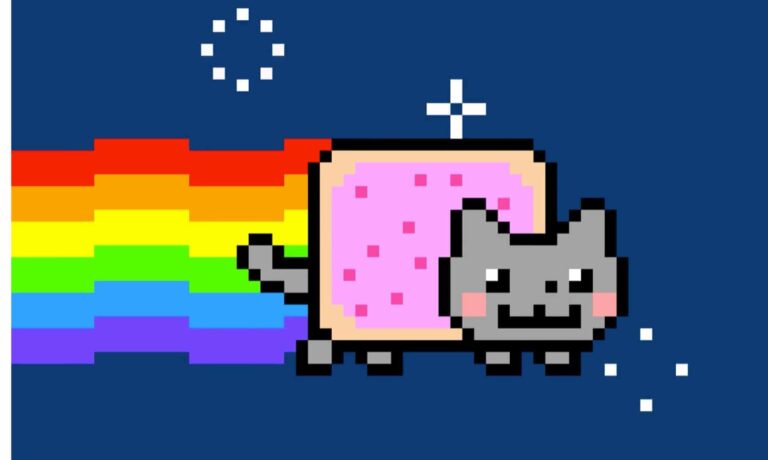
In March this year, an online auction at Christie’s sold Beeple’s “The First 5000 Days” for a whopping $69.3 million – the third highest price ever achieved by a living artist. But even more noteworthy was the fact that it was a purely digital piece of art.
Thanks to unique digital identifiers known as non-fungible tokens (NFT), crypto-art fever has taken the world by storm. On 19 February, an animated Gif of Nyan Cat – a 2011 meme of a flying pop-tart cat – sold for more than $500,000. A few weeks later, musician Grimes sold some of her digital art for more than $6 million. Talk about jaw-dropping.
And it’s not just art being tokenized and sold. Anything digital can be viewed as a form of NFT. For example, the first ever post by Twitter’s Jack Dorsey was listed for sale this March, with bids reaching $2.5 million.

According to Artprice, a leader in art market information, contemporary art auctions hit a peak of $2.7 billion over the past fiscal year of 2020-2021. This is largely due to artists and galleries moving their assets online during the COVID pandemic, and the world’s burgeoning fascination for NFTs.
Thierry Ehrmann, the CEO of Artprice, called NFTs a “sensational arrival” to the landscape of art.
But what some are calling avant-garde art, others are calling a load of crap. Afterall, are memes and pixelated cartoons we see and use on social media everyday really worth hundreds of thousands of dollars? And how about investment-wise? Are NFTs a bubble waiting to burst, or could these modern day digital collectibles bring in actual profit?
If you’ve been living under a rock for the most part of 2021, it’s time to take a deeper look.
What are Non-Fungible Tokens?
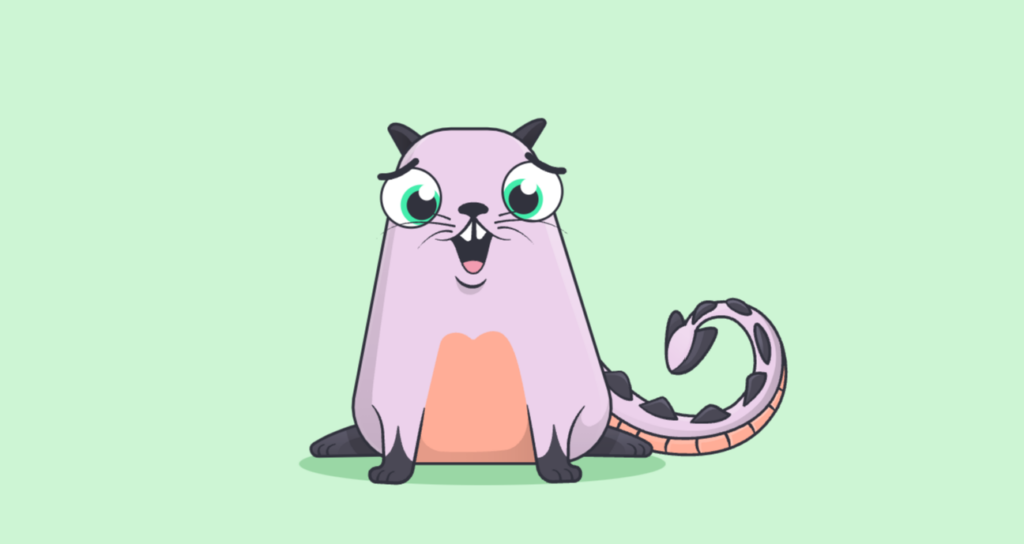
A non-fungible token (NFT) is a unique digital certificate that represents ownership of real-world items like art, video clips, music, and more. Once a NFT is minted, it becomes one-of-a-kind, and all transactions are tracked by a digital ledger. Other people can still view and use the NFT, but no matter how many times the file is duplicated, there’s only going to be one authentic piece. Think of it in terms of traditional art collecting. You can take a photo or buy a print of the Mona Lisa, but those copies won’t have the same value as Da Vinci’s original painting.
NFTs are securely recorded on blockchains, the same technology behind Bitcoin and other cryptocurrencies. The difference is that cryptocurrency tokens are fungible tokens, similar to fiat currencies, like a dollar, while NFTs create unique tokens that can show ownership and convey rights over digital goods.
How Do I Buy NFTs?
Similar to Amazon or eBay, a NFT marketplace is a platform where users can store, display, trade and, in some cases, mint (create) NFTs.
The creator or current owner may choose a specific price. Or, there may be an auction, and you’ll have to bid on the NFT.
Here are a few marketplaces that have sprung up in recent years:
- Foundation: A community-curated marketplace that requires creators to be invited by other creators who are already part of the platform.
- Nifty Gateway: An art-focused marketplace that works with big-name brands, athletes, and creators.
- OpenSea: One of the first and largest marketplaces where you can find NFTs for a wide-range of collectibles.
- Rarible: Offers a range of NFTs with an emphasis on art. Uses its own RARI token to reward members.
- SuperRare: A marketplace that focuses on curating and offering digital art.
Since NFTs are bought with cryptocurrencies, you will need a funded crypto wallet that’s compatible with whatever blockchain network used by the marketplace they want to buy or sell an NFT in, and there will be transaction and processing fees for making purchases, just like with any kind of online shopping.
Is this a Bubble?
“There is clearly speculation,” said Andrés Guadamuz, a professor at the University of Sussex and expert in digital intellectual property rights. “Many of us who have been watching this world have been caught by surprise by this fad,” he added, placing the tipping point at the beginning of this year and the sale of Beeple’s NFT.
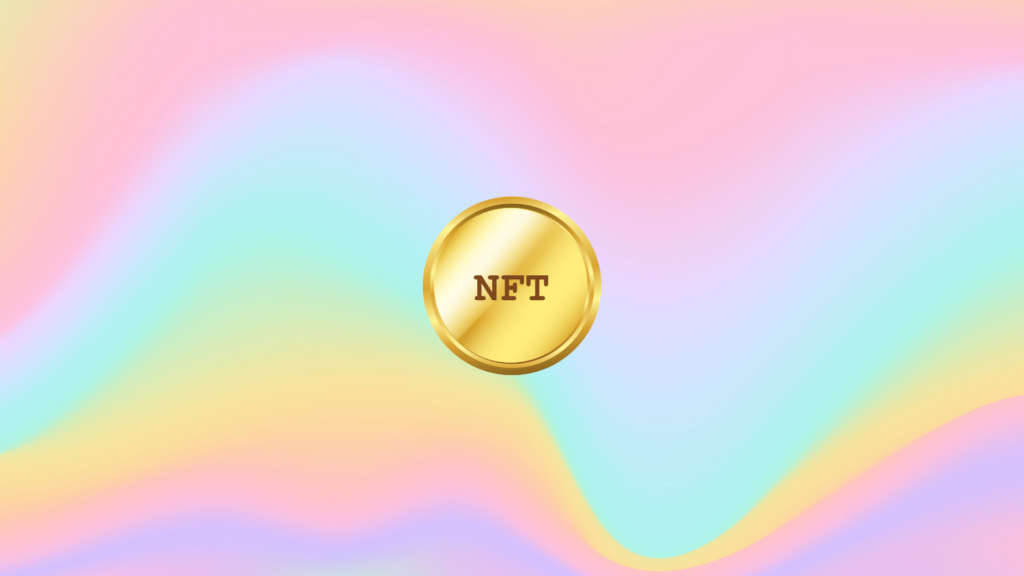
The ever higher prices, however, are now starting to show signs of an overheated market. The number of people using NFT markets fell 80% from a peak of 650,000 at the beginning of the year to about 128,000 the first week of August. Sales volume was verging on an impressive $200 million last February, but interest dropped sharply in subsequent months, sitting at just $25 million in May, according to the Statista website.
Speculation has been a part of collecting art long before NFTs came along. But the newness and unfamiliarity of the technology makes it much riskier. “Trading in new and relatively unknown instruments, such as NFTs, is not so much a form of investment as a bet,” said Jo Michell, Associate Professor of Economics at UWE Bristol. The gamble is risky because market trends are not driven by relatively predictable behavior such as a company going bust or the progressive career of an artist. “A lot of the action is driven by herd-chasing,” Michell added. But in the crypto-art herd, not all cattle are created equal. “The very wealthy are willing to spend lump sums of money on status tokens, such as NFTs. This leads to other more humble investors imitating them.”
A Digital Reckoning
What happens next is anyone’s guess. But the love between young art enthusiasts and blockchain certainly seems to be contributing to the revival of contemporary art.
A survey by UBS and Art Economic found that a new sector of millennial collectors are driving digital works, with 12 percent of art sales in the first half of 2021 being purely digital.
Another example of how the art industry is changing is the Digital Art Fair held in Hong Kong from Sept. 30 to Oct. 17, which features immersive, digital, and NFT art created by artists around the world, including contemporary urban artist King of Kowloon, promoter of the world’s first NFT home Krista Kim, and the NFT artwork “Untitled (Self-Portrait)” by pop art icon Andy Warhol.
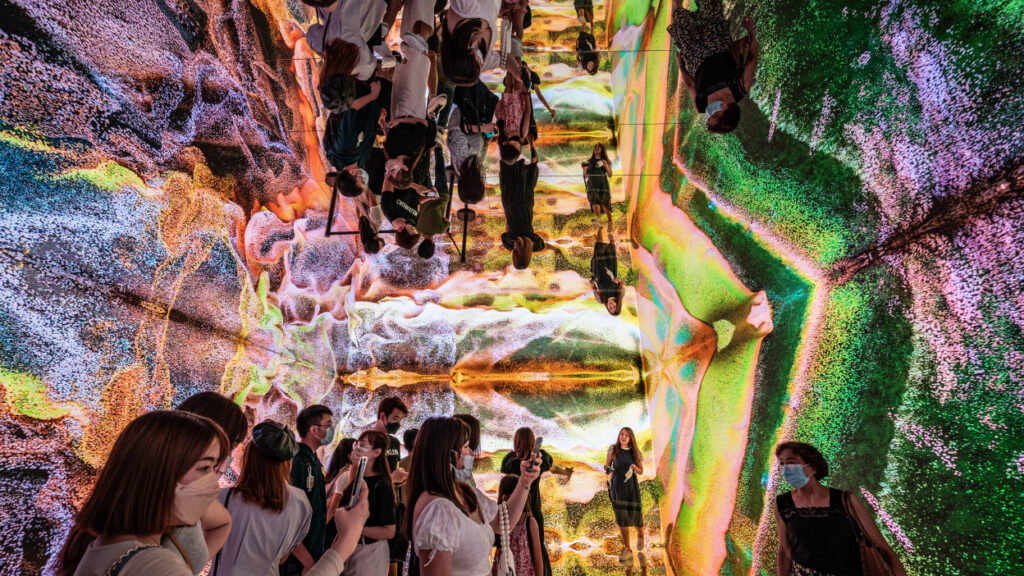
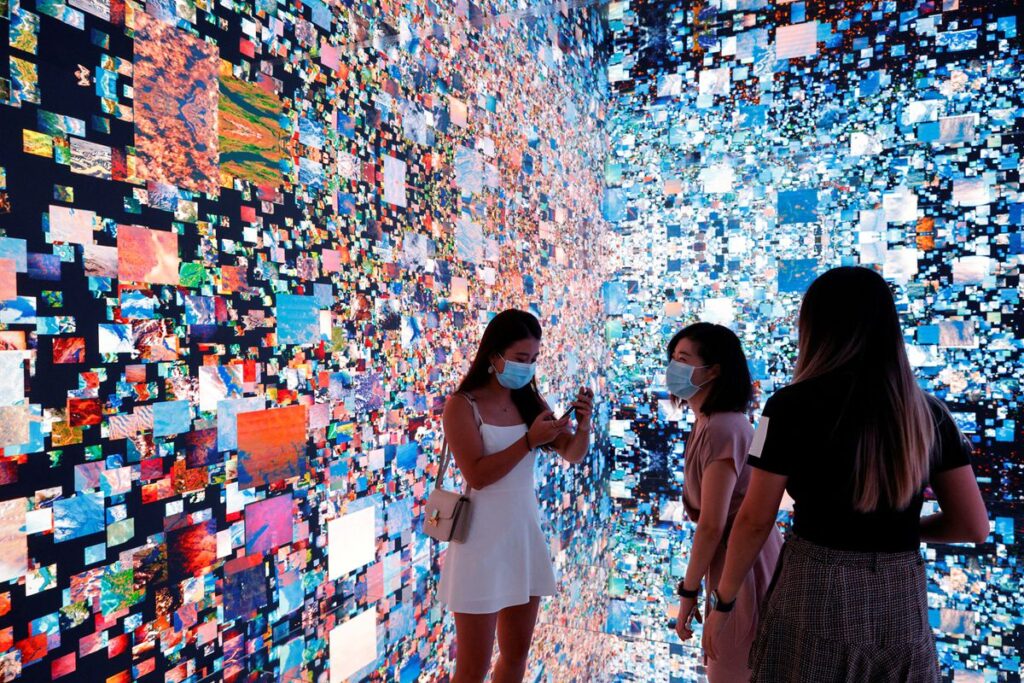
These mind-spinning photos tell it all. The hype around memes and tweets may not last forever, but no matter which way the market turns, the concept of digital art is here to stay.